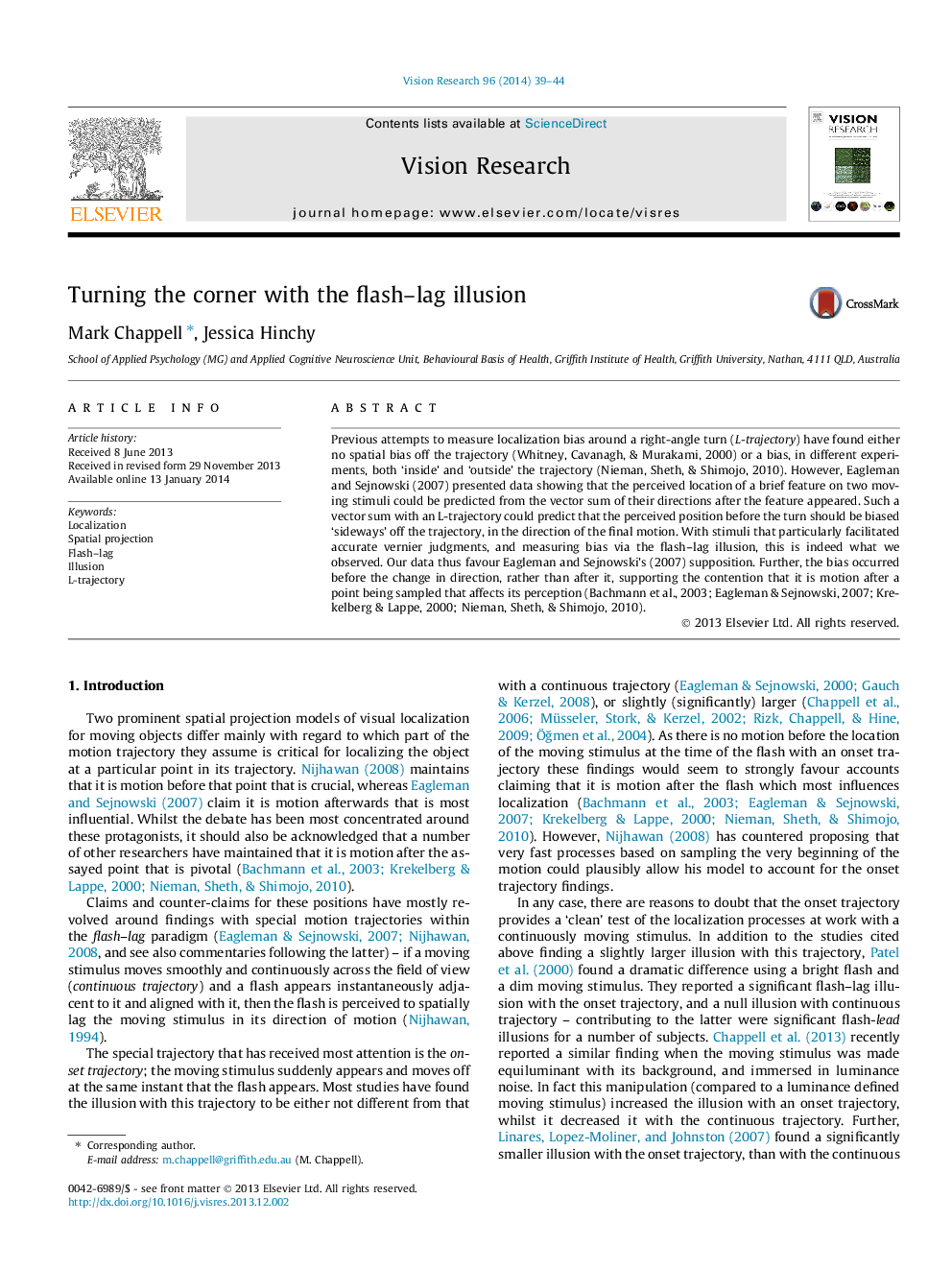| Article ID | Journal | Published Year | Pages | File Type |
|---|---|---|---|---|
| 6203457 | Vision Research | 2014 | 6 Pages |
â¢This report briefly reviews attempts to discriminate between models of visual localization with various motion trajectories.â¢This report extends the literature regarding perceptual biases when localizing a moving stimuli which traverses a right-angled turn.â¢This report finds, utilizing the flash-lag illusion, that the corner is smoothed, or rounded, in perception.â¢This report provides evidence that localization of moving stimuli is influenced by motion occurring after the point being localized.â¢This report presents a demonstration that motion information may be vectorially added in biasing the localization of moving stimuli.
Previous attempts to measure localization bias around a right-angle turn (L-trajectory) have found either no spatial bias off the trajectory (Whitney, Cavanagh, & Murakami, 2000) or a bias, in different experiments, both 'inside' and 'outside' the trajectory (Nieman, Sheth, & Shimojo, 2010). However, Eagleman and Sejnowski (2007) presented data showing that the perceived location of a brief feature on two moving stimuli could be predicted from the vector sum of their directions after the feature appeared. Such a vector sum with an L-trajectory could predict that the perceived position before the turn should be biased 'sideways' off the trajectory, in the direction of the final motion. With stimuli that particularly facilitated accurate vernier judgments, and measuring bias via the flash-lag illusion, this is indeed what we observed. Our data thus favour Eagleman and Sejnowski's (2007) supposition. Further, the bias occurred before the change in direction, rather than after it, supporting the contention that it is motion after a point being sampled that affects its perception (Bachmann et al., 2003; Eagleman & Sejnowski, 2007; Krekelberg & Lappe, 2000; Nieman, Sheth, & Shimojo, 2010).
